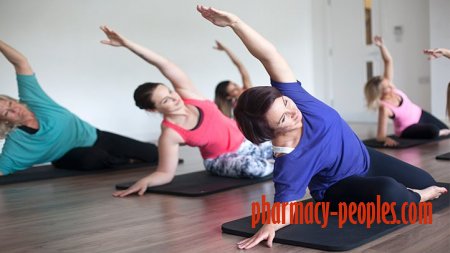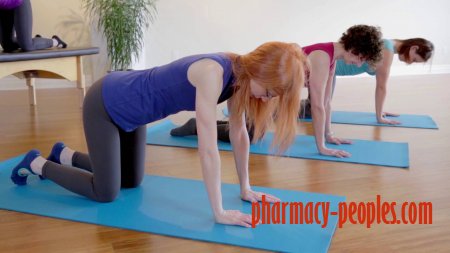Safe Pilates Exercises for Osteoporosis
Pilates strengthens and tones your core, including the muscles in your abdomen, pelvis, back, and shoulders, potentially improving your posture and balance.
You’ve probably heard that weight-bearing exercises — such as walking — can help reduce the risk of a broken bone when you have osteoporosis. But don’t overlook Pilates as a potential skeleton-saving workout for those with low bone density.
"The fundamentals of Pilates offer a terrific platform for strengthening bones and preventing fractures if done properly," says Rebekah Rotstein, a Pilates instructor at Kinected in New York City. Rotstein is the creator of Buff Bones, a movement system that draws on Pilates to manage and prevent bone and joint problems.
But not just any Pilates routine will do. In fact, many basic Pilates exercises are not safe for people with osteoporosis because of the strain they put on the spine. Here’s what you need to know before you hit the mat or machines:
How Pilates Can Help Someone With Osteoporosis
Pilates is a set of exercises first developed by Joseph H. Pilates while interned in a British camp for German citizens during World War I. Over the years, he refined his methods for strengthening the core muscles of the body that support the spine and help to keep the body balanced. Pilates also incorporated breath awareness into his exercises, a practice that is emphasized in many Pilates classes today.
Done correctly, Pilates exercises can help people with weakened bones by:
- Increasing bone density when body parts move against the force of gravity
- Increasing strength and muscle mass, which in turn help to support the bones
- Improving balance, which can help prevent falls that might result in a bone fracture
- Improving range of motion and posture, which can help keep the bones in alignment and prevent painful pinched nerves and muscle spasms in the back
Still, according to Rotstein,"Three-quarters of the exercises in traditional Pilates need to be modified for someone with osteoporosis. The traditional Pilates mat class is not advisable."
But modified classes, which omit the mat exercises listed below and are under the direction of a trained instructor, can be safe.
Which Pilates Exercises Are Safe for a Person With Osteoporosis?
Exercises that work the back, shoulders, legs, and hips are the most beneficial for people with osteoporosis.
"The most damaging type of injury one can incur is a fracture of the hip," Rotstein says. "Strengthening the hips should be a big goal."
But people with osteoporosis should avoid Pilates exercises that involve bending forward or rolling on their backs, and should be very cautious about performing exercises that involve twisting the spine.
"Pilates has a large proportion of motions that involve bending forward through the spine," Rotstein warns. "That is the most dangerous motion for someone who has bone loss. It could lead to a fracture of the spine."
Safe Pilates Mat Exercises for Someone With Osteoporosis
- Single and double leg kicks
- Side-lying series
- Leg pulls and circles
- Push-ups
- Chest expansion
Unsafe Mat Exercises
- Roll up
- Roll over
- Jackknife
- Spine twist
- Saw
Some Pilates exercises involve the use of equipment such as the reformer, which somewhat resembles a rowing machine and provides resistance for the person exercising.
The trap table, or trapeze table, is another piece of Pilates equipment found in some studios that enables certain stretches and strength-training exercises.
Equipment-based Pilates can be just as safe as mat exercises, Rotstein says, and perhaps more effective because they add an element of strength training to your workout.
Safe Pilates Machine Exercises for People With Osteoporosis
- Foot work (using the reformer)
- Leg and arm circles (reformer)
- Pulling straps (reformer)
- Side splits (reformer)
- Leg-spring series (trap table)
- Chest expansion (trap table)
- Unsafe Machine Exercises
- Short spines
- Tower
- Overhead
- Mermaid
Questions to Ask a Pilates Instructor if You Have Osteoporosis
With the rise in popularity, it's easier than ever to find Pilates classes, but people with osteoporosis need to look for classes that are specifically geared to their condition, or at least be familiar with which exercises to leave out when attending a general Pilates class.
You can also ask the instructor for help identifying which exercises are safe for someone who has osteoporosis. Some questions you may wish to ask include:
- Are you familiar with which exercises are safe and unsafe for people with osteoporosis?
- Will the planned workout include any of the exercises listed above as unsafe?
- Will exercises aimed at balance and fall prevention be included in the workout routine?
- Health / Fitness
- 21-05-2018, 23:33
- 1 686
- Pharmatic

